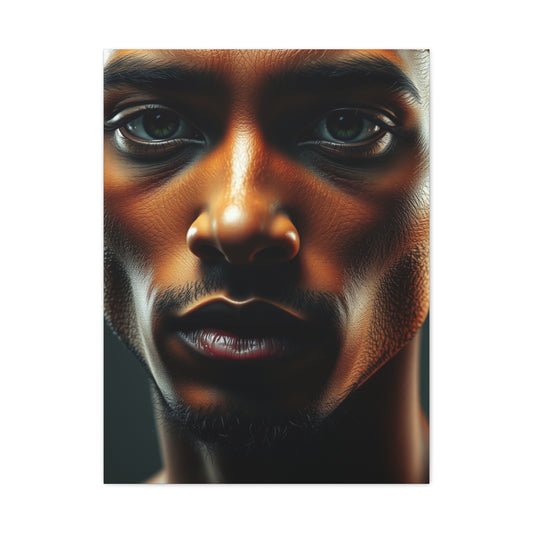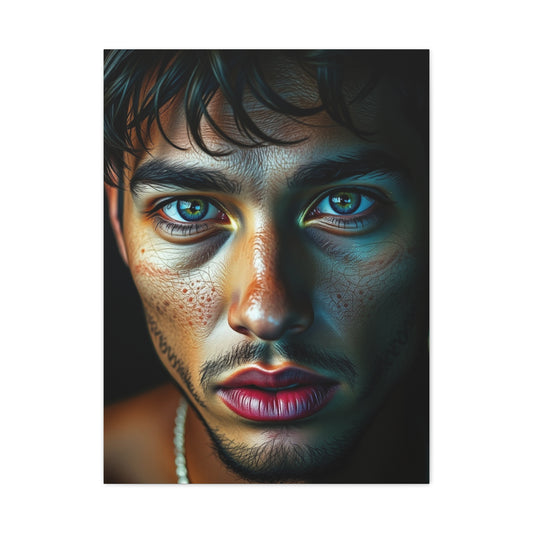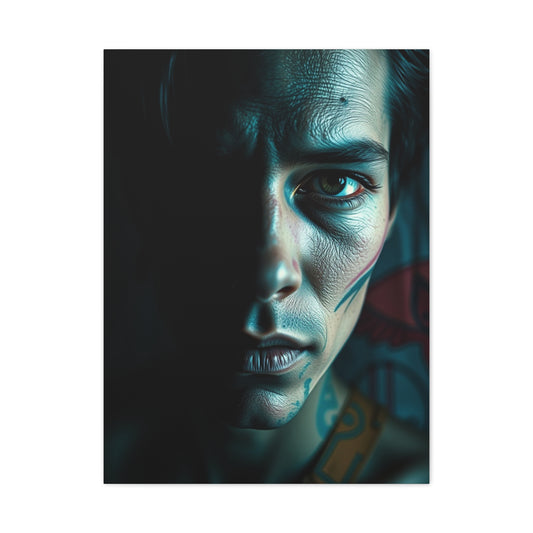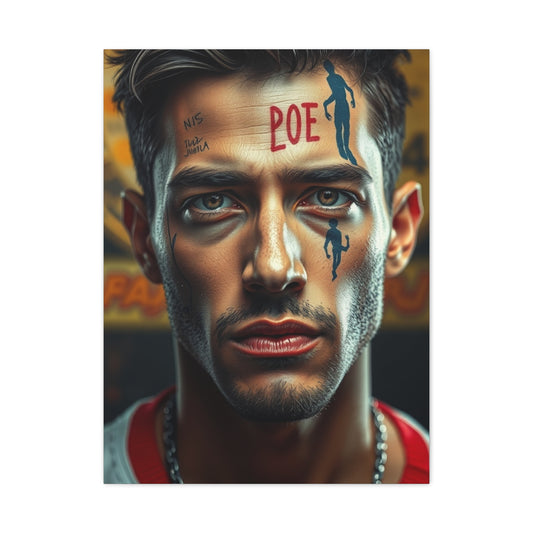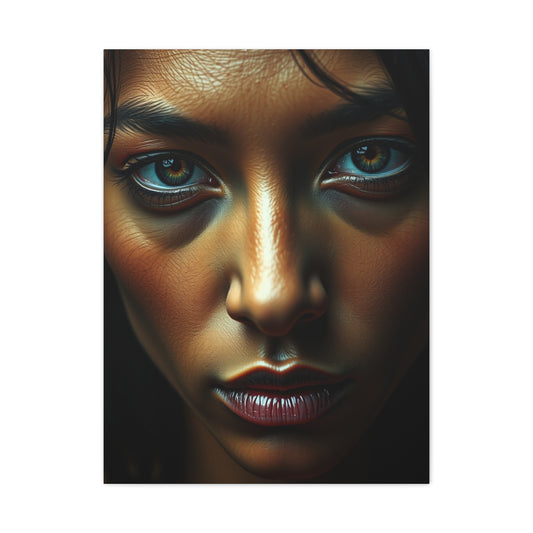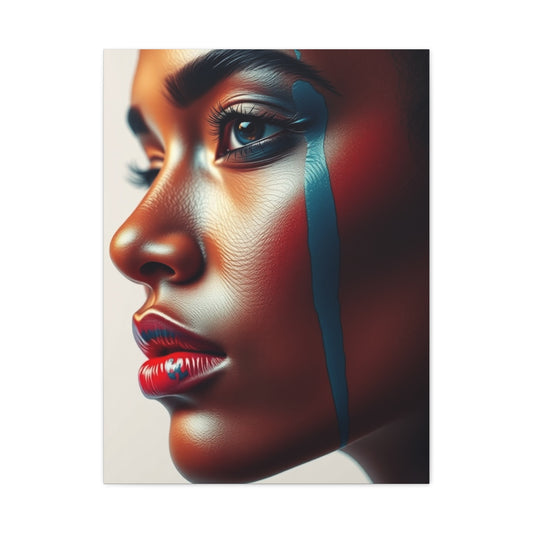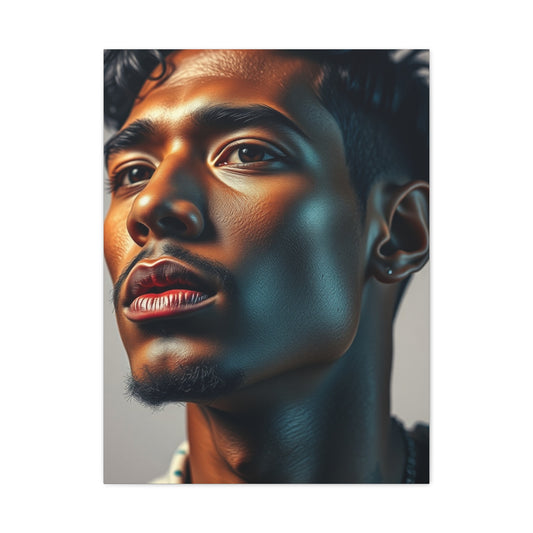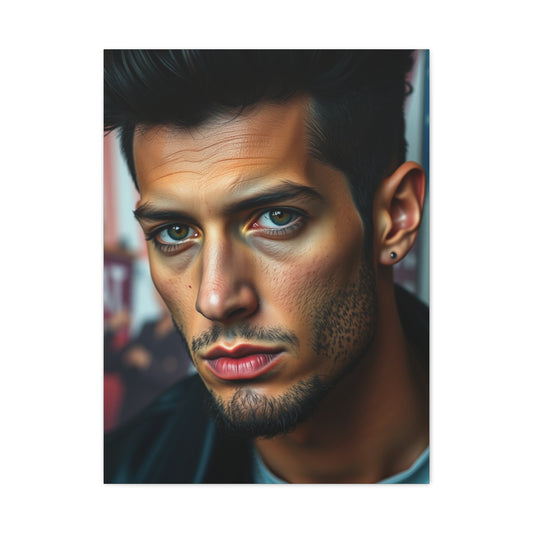The Comprehensive Guide to Loui Jover Wall Art: Mastering Ink, Emotion, and Interior Design
Loui Jover stands as one of the most recognizable contemporary artists of our time, creating profound visual narratives that blend human emotion with literary heritage. His unique approach to wall art has transformed how we perceive the intersection of literature and visual expression. The Australian artist has developed a signature style that resonates with collectors, interior designers, and art enthusiasts worldwide, making his pieces highly sought-after additions to modern living spaces.
Jover's artistic journey began with a deep appreciation for vintage books and the stories they contain. Rather than viewing these literary treasures as mere text, he recognized their potential as canvases for new forms of expression. This revolutionary perspective led to the creation of his distinctive ink drawings on book pages, where silhouettes and figures emerge from the printed words beneath them. The result is a powerful synthesis of literature and visual art that speaks to both the intellectual and emotional aspects of human experience.
The artist's choice of medium reflects his respect for the written word while simultaneously creating something entirely new. Each piece tells multiple stories - the original text provides one layer of meaning, while his ink drawings add another dimension of interpretation. This layered approach to storytelling has made Loui Jover wall art particularly appealing to those who appreciate depth and complexity in their home décor choices.
His figures, predominantly featuring women in various emotional states, are rendered with delicate line work that suggests rather than defines. This technique allows viewers to project their own experiences and interpretations onto the pieces, creating a personal connection that extends beyond simple aesthetic appreciation. The vulnerability and strength captured in his subjects make these pieces conversation starters and focal points in any room where they're displayed.
The Evolution of Ink Drawing on Literary Canvases
The development of Jover's signature style represents a significant evolution in contemporary art practices. His decision to work exclusively with ink on vintage book pages was not arbitrary but rather a carefully considered choice that reflects his artistic philosophy. The permanence of ink mirrors the lasting impact of literature, while the choice to work on pre-existing texts acknowledges the cultural heritage that informs all creative expression.
This medium presents unique challenges that have shaped Jover's artistic development. Unlike traditional canvases, book pages have existing content that must be incorporated into the composition. The artist has mastered the skill of working with rather than against these existing elements, allowing the text to enhance rather than compete with his drawings. This harmonious relationship between old and new creates a visual tension that energizes each piece.
The ink medium itself offers both limitations and opportunities. Its fluid nature allows for organic, expressive lines that capture the spontaneous quality of human emotion. However, ink's unforgiving character means that every mark must be intentional and confident. This requirement has honed Jover's technical skills while maintaining the emotional authenticity that makes his work so compelling.
Working on vintage paper also introduces variables of texture, aging, and coloration that cannot be replicated on modern surfaces. These characteristics become integral parts of each composition, adding depth and historical context that enhances the overall impact. The yellowed pages, coffee stains, and worn edges all contribute to the nostalgic quality that makes Loui Jover wall art so distinctive and emotionally resonant.
Exploring Themes of Love, Loss, and Human Connection
Central to Jover's body of work are universal themes that transcend cultural and temporal boundaries. His exploration of human relationships, particularly romantic love and its complexities, resonates with viewers across different backgrounds and experiences. The artist's ability to capture both the joy and melancholy inherent in human connections makes his pieces emotionally powerful additions to personal living spaces.
Love, in its many forms, appears consistently throughout Jover's portfolio. His couples embrace against backdrops of poetry and prose, creating visual metaphors for the way love stories become part of our personal narratives. The positioning of figures suggests intimacy while maintaining a sense of universality that allows viewers to see their own relationships reflected in the art. This personal connection transforms wall décor from mere decoration into meaningful expression of personal values and experiences.
The theme of loss permeates many pieces, handled with sensitivity and grace that avoids sentimentality. Jover's treatment of grief, separation, and longing acknowledges the pain while celebrating the beauty of what has been shared. This balanced approach makes his art suitable for spaces where people seek comfort and reflection, such as bedrooms, reading nooks, or quiet corners designated for contemplation.
Memory serves as another recurring motif, often symbolized through the layering of text and image. The underlying words suggest the stories we carry with us, while the drawn figures represent how these memories take shape in our minds. This concept of memory as both burden and gift resonates particularly strongly with those who have experienced significant life transitions or who value the preservation of meaningful moments.
Mastering Interior Design Integration with Jover's Work
Successfully incorporating Loui Jover wall art into interior design requires understanding both the pieces themselves and the spaces they will inhabit. His work possesses a unique quality that can either complement existing décor or serve as a dramatic focal point, depending on the approach taken. The key lies in recognizing the emotional weight these pieces carry and ensuring that their placement enhances rather than overwhelms the intended atmosphere.
The monochromatic nature of Jover's ink drawings makes them remarkably versatile in terms of color coordination. These pieces work effectively with both bold and subtle color schemes, though they tend to be most impactful when allowed to stand out against neutral backgrounds. White or cream walls provide excellent contrast that allows the intricate line work to be fully appreciated, while the aged paper tones add warmth that prevents the space from feeling sterile.
Scale considerations are crucial when selecting and positioning Jover's work. While his pieces can range from intimate sketches suitable for powder rooms to large statement pieces appropriate for main living areas, each requires careful consideration of the viewing distance and surrounding elements. Smaller pieces benefit from closer inspection, making them ideal for personal spaces where viewers can appreciate the delicate interplay between text and image.
Lighting plays a particularly important role in displaying these works effectively. The textural qualities of vintage paper and the subtle variations in ink application are enhanced by proper illumination. Soft, directional lighting that avoids harsh shadows allows viewers to appreciate both the artistic elements and the underlying text, creating the layered viewing experience that makes these pieces so compelling.
The emotional content of Jover's work makes placement decisions particularly significant. Romantic pieces featuring couples work beautifully in bedrooms or intimate dining areas, while more contemplative solo figures might be better suited to studies, libraries, or meditation spaces. Understanding the emotional resonance of each piece ensures that it contributes positively to the intended atmosphere of its location.
Analyzing the Symbolism in Female Portraiture
Jover's focus on female subjects reveals a complex understanding of femininity that goes beyond simple aesthetic choices. His women are portrayed with agency and depth, often captured in moments of introspection, movement, or interaction that suggest rich inner lives. This approach to female portraiture reflects contemporary perspectives on women's experiences while maintaining timeless qualities that prevent the work from feeling dated or trendy.
The positioning and posture of his female figures convey different aspects of the feminine experience. Dancers represent freedom and self-expression, while reading figures suggest intellectual engagement and personal growth. Embracing couples explore themes of partnership and vulnerability, creating visual narratives that resonate with viewers' own relationship experiences. Each pose is carefully chosen to convey specific emotional states without relying on facial expressions, allowing for broader interpretation and personal connection.
The choice to work primarily with silhouettes rather than detailed portraits serves multiple purposes. This approach universalizes the subjects, allowing viewers of different backgrounds to see themselves or their experiences reflected in the work. It also places emphasis on body language and positioning as the primary means of communication, skills that Jover has developed to a remarkable degree of sophistication.
The integration of feminine figures with literary texts creates powerful statements about women's roles as both subjects and creators of cultural narratives. By placing these figures within the context of existing literature, Jover acknowledges the historical contributions of women to cultural heritage while creating new stories that reflect contemporary understanding of female experience.
The Role of Typography and Literary Elements
The underlying text in Jover's work functions as more than mere background; it serves as an integral component of the artistic composition. The artist's selection of literary sources reflects his understanding of how written words can enhance and complicate visual narratives. Classic literature, poetry, and philosophical texts provide rich foundations that add layers of meaning to the visual elements layered above them.
The relationship between text and image in these pieces operates on multiple levels. Sometimes the content of the underlying text relates directly to the drawn figures, creating reinforcing narratives that deepen the overall impact. In other instances, the juxtaposition creates tension or irony that adds complexity to the viewing experience. This sophisticated interplay between different forms of expression demonstrates Jover's deep understanding of both literary and visual communication.
Typography itself becomes a design element in these compositions. The fonts, spacing, and layout of the original texts contribute to the overall aesthetic while providing textural variety that enhances the visual interest of each piece. Jover's skill in working with these existing typographical elements demonstrates his ability to incorporate found elements into new creative expressions without compromising artistic integrity.
The preservation of readable text within his compositions allows viewers to engage with the work on multiple levels. Some may focus primarily on the visual elements, while others will read fragments of the underlying text, creating personalized experiences that change with each viewing. This multi-layered approach to art creation ensures that these pieces remain engaging over time, revealing new details and connections with repeated exposure.
Creating Emotional Resonance Through Minimalist Expression
Jover's mastery of minimalist expression allows him to convey complex emotions through economical means. His ability to suggest rather than explicitly state creates space for viewer interpretation while maintaining clear emotional direction. This balance between guidance and ambiguity makes his work accessible to diverse audiences while retaining the depth that sustains long-term interest.
The artist's line quality demonstrates remarkable sensitivity to the emotional content being conveyed. Flowing, organic lines suggest movement and freedom, while more controlled, architectural strokes imply structure and contemplation. This variation in mark-making creates visual rhythm that guides the viewer's eye while contributing to the overall emotional tone of each piece.
The strategic use of negative space in Jover's compositions amplifies the impact of his drawn elements. Areas of unmodified text provide visual rest while allowing the ink drawings to breathe and maintain their prominence within the composition. This understanding of compositional balance reflects sophisticated design sensibilities that elevate the work beyond simple illustration.
Color restraint, achieved through his commitment to monochromatic ink work, forces attention to other visual elements such as composition, texture, and line quality. This limitation has pushed Jover to develop exceptional skills in these areas, resulting in work that achieves remarkable visual impact through purely graphic means. The absence of color also ensures that these pieces integrate well with various interior color schemes without competing for attention.
The Cultural Impact of Literary Art Fusion
Jover's approach to combining visual art with literary elements reflects broader cultural trends toward interdisciplinary creative expression. His work anticipates and participates in conversations about the relationship between different art forms and their potential for mutual enhancement. This cultural positioning makes his pieces relevant not only as decorative objects but as participants in ongoing cultural dialogues.
The choice to work with vintage books raises questions about the relationship between old and new forms of cultural expression. Rather than viewing digital media as replacements for traditional forms, Jover's work suggests ways that different media can coexist and enrich each other. This perspective appeals to collectors and designers who value both historical continuity and contemporary innovation.
His international recognition demonstrates the universal appeal of themes explored through his unique medium. Despite working with English-language texts, his visual narratives transcend linguistic barriers and resonate with audiences across different cultural contexts. This broad appeal makes his work valuable for collectors interested in pieces that will remain relevant across different social and cultural environments.
The academic interest in Jover's work reflects its significance within contemporary art discourse. Museums and galleries have recognized his contributions to the evolution of drawing and mixed-media practices, positioning him as an important voice in current artistic conversations. This institutional recognition adds cultural weight to his pieces, making them valuable additions to serious art collections.
Curatorial Considerations for Collectors and Enthusiasts
Building a collection of Loui Jover wall art requires understanding both the artistic and practical considerations that affect long-term satisfaction and value. His prolific output means that collectors have numerous options, but this abundance also requires careful selection to ensure cohesive collection development. Understanding the evolution of his style and the relative rarity of different types of pieces helps inform purchasing decisions.
Authentication represents a crucial concern given the popularity of Jover's work and the relative simplicity of his medium. Legitimate pieces come with certificates of authenticity and proper provenance documentation. Collectors should work with reputable galleries and dealers who can provide proper documentation and guarantee the legitimacy of offered pieces. The investment value of authentic works makes proper verification essential.
Condition assessment requires special consideration given the aged paper medium. Unlike works on traditional canvases or papers, these pieces incorporate the natural aging and wear of vintage books as integral elements. However, excessive damage, active deterioration, or improper previous handling can affect both aesthetic impact and longevation. Understanding the difference between desirable character and problematic damage helps collectors make informed decisions.
Storage and display considerations for these works differ from traditional paper-based art due to their unique medium. While the aged paper provides natural character, it also requires protection from environmental factors that could accelerate deterioration. Proper framing with archival materials, appropriate lighting levels, and climate control help preserve these pieces for future enjoyment and maintain their investment value.
Professional Framing and Presentation Strategies
The presentation of Loui Jover wall art significantly impacts its visual effect and longevation. Professional framing serves both protective and aesthetic functions, requiring careful consideration of materials and styles that complement rather than compete with the artwork. The unique nature of these pieces, combining aged paper with ink drawings, presents specific challenges that require specialized knowledge and materials.
Matting choices affect both the visual impact and the preservation of these works. Acid-free materials are essential for long-term preservation, while the color and width of mats influence the visual presentation. Neutral colors typically work best, allowing the natural tones of the aged paper to provide warmth while maintaining focus on the artwork itself. The width of mats should be proportionate to the piece size and the intended viewing environment.
Glass selection involves balancing protection with visual clarity. UV-filtering glazing protects against light damage while museum-quality options minimize reflections that could interfere with viewing. The choice between glass and acrylic depends on factors including piece size, location, and security considerations. Each option offers different benefits that should be evaluated based on the specific circumstances of display.
Frame selection should complement both the artwork and the intended display environment. Traditional frames may compete with the contemporary nature of the work, while overly modern frames might clash with the vintage paper elements. Simple, well-proportioned frames in neutral finishes typically provide the best balance, allowing the artwork to remain the focus while providing appropriate visual support.
Conservation and Long-term Care Strategies
Preserving Loui Jover wall art requires understanding the unique conservation challenges presented by ink on aged paper. Unlike works on traditional art papers or canvases, these pieces incorporate materials with existing aging and potentially variable composition. Developing appropriate care strategies helps ensure that these works remain stable and visually appealing over time while respecting their unique character.
Environmental control represents the most important factor in long-term preservation. Temperature and humidity fluctuations can cause paper to expand and contract, potentially leading to cracking, warping, or other damage. Maintaining stable conditions within recommended ranges helps minimize these risks. Air quality also affects preservation, with pollutants and particulates potentially causing discoloration or surface deposits over time.
Light exposure requires careful management to prevent fading and deterioration. While these works were created on already-aged paper, continued exposure to UV radiation and high light levels can accelerate degradation. Using appropriate filtration and limiting exposure duration helps preserve both the ink and paper components. Rotating display can also help minimize cumulative light exposure while allowing continued enjoyment of the work.
Handling procedures should minimize direct contact with the artwork surface. Even clean hands transfer oils and acids that can cause long-term staining or degradation. When movement is necessary, proper support and clean cotton gloves help protect the work. Professional assistance is advisable for any significant handling, such as reframing or condition assessment.
Regular monitoring allows early detection of any developing problems. Changes in appearance, evidence of pest activity, or signs of environmental damage should prompt consultation with qualified conservators. Early intervention is typically more effective and less expensive than addressing advanced deterioration. Documenting the condition over time also provides valuable information for insurance and resale purposes.
Thematic Groupings and Series Development
Jover's body of work can be organized into several thematic groups that reflect his ongoing interests and artistic development. Understanding these groupings helps collectors develop cohesive collections while appreciating the evolution of his artistic voice. The recurring themes and motifs demonstrate his deep engagement with specific aspects of human experience and his commitment to exploring them through his unique medium.
Romantic couples represent one of the most recognizable themes in his work. These pieces explore various aspects of intimate relationships, from tender moments of connection to the complex dynamics of long-term partnership. The variety within this theme allows for collections that examine different facets of love and commitment while maintaining visual coherence through consistent style and medium.
Solo female figures form another major grouping, often depicting women in moments of contemplation, activity, or emotional expression. These pieces celebrate feminine strength and vulnerability while avoiding stereotypical representations. The diversity of poses, activities, and emotional states within this theme provides rich collecting opportunities for those interested in contemporary representations of women's experiences.
Dance and movement pieces capture the joy and freedom of physical expression while demonstrating Jover's skill in depicting motion through static media. The flowing lines and dynamic poses in these works create visual energy that can enliven interior spaces while celebrating the beauty of human movement. These pieces work particularly well in spaces dedicated to creativity or physical activity.
Literary and reading themes reflect Jover's deep appreciation for written culture and the act of reading itself. These pieces often feature figures engaged with books or surrounded by text, creating meta-narratives about the relationship between different forms of cultural expression. For collectors who share this appreciation for literature, these works provide particularly meaningful connections.
The Influence of Digital Media on Traditional Art Forms
Jover's work exists at the intersection of traditional and digital art worlds, representing how contemporary artists navigate changing media landscapes. His commitment to traditional materials and hand-drawn elements stands in contrast to digital art trends while maintaining relevance for audiences comfortable with digital communication. This positioning makes his work appealing to collectors interested in authentic, hand-made objects in an increasingly digital world.
The documentation and reproduction of his work through digital platforms has expanded his audience while raising questions about the relationship between original works and their digital representations. High-quality digital reproductions allow global audiences to appreciate his work, though they cannot replicate the textural qualities and physical presence of the originals. This distinction helps maintain the value and appeal of original pieces for serious collectors.
Social media has played a significant role in building awareness of Jover's work, particularly among younger audiences who might not encounter it through traditional gallery channels. The visual nature of platforms like Instagram provides ideal venues for sharing his work, though the medium's emphasis on immediate visual impact sometimes obscures the deeper layers of meaning in his pieces.
The tension between digital distribution and traditional collecting reflects broader cultural questions about ownership, authenticity, and value in the digital age. Jover's work provides a bridge between these worlds, offering physical objects that can be collected and owned while remaining accessible through digital channels for broader appreciation and discussion.
Gallery Relationships and Exhibition History
Jover's relationship with galleries and his exhibition history provide important context for understanding his artistic development and market position. His progression from small gallery shows to international exhibitions reflects growing recognition of his contributions to contemporary art. This trajectory provides confidence for collectors while demonstrating the serious artistic merit of his work.
Early gallery relationships helped establish his distinctive voice and provided platforms for experimentation and development. These formative partnerships often resulted in pieces that show his artistic growth and exploration of new themes or approaches. Collectors interested in his artistic development may find particular value in pieces from these early periods.
Major exhibitions have often prompted the creation of new work or the exploration of specific themes. Exhibition catalogs and reviews provide valuable documentation of his artistic intentions and the critical reception of different bodies of work. This documentation helps collectors understand the context and significance of specific pieces while providing provenance information that affects value and authenticity.
International exhibitions have expanded his audience while creating opportunities for cultural exchange and artistic growth. These experiences have influenced his work in subtle ways, sometimes introducing new elements or perspectives that reflect his engagement with different cultural contexts. Understanding this exhibition history helps collectors appreciate the full scope of his artistic development.
Understanding Pricing Structures and Value Determinants
The pricing of Loui Jover wall art reflects various factors that collectors should understand when making acquisition decisions. Unlike traditional pricing models based primarily on size and medium, his work incorporates additional considerations related to the underlying book materials, thematic content, and market positioning. Understanding these factors helps collectors make informed decisions and recognize good value opportunities.
Size remains an important pricing factor, with larger pieces typically commanding higher prices due to increased visual impact and material costs. However, the relationship between size and price is not strictly linear, as other factors such as composition complexity and thematic appeal also influence value. Some smaller pieces with particularly compelling subjects or superior execution may command prices comparable to larger works.
The condition and character of the underlying book materials affect both pricing and desirability. Pages from rare or significant literary works may carry premium values, while the overall condition of the paper influences both aesthetic appeal and longevation considerations. Collectors should understand how to assess these factors when evaluating potential acquisitions.
Edition size and availability influence pricing through basic supply and demand dynamics. Unique pieces or small editions typically command higher prices, while more widely available works may offer better entry points for new collectors. Understanding the production methods and typical edition sizes helps collectors assess the relative scarcity of specific pieces.
Market timing can significantly affect both acquisition costs and resale values. The art market experiences cycles that affect prices across different categories, and understanding these patterns can inform both buying and selling decisions. However, collectors should focus primarily on personal satisfaction and long-term appreciation rather than short-term market fluctuations.
Building Cohesive Collections with Thematic Focus
Successful collecting of Loui Jover wall art often benefits from thematic focus that creates coherent narratives while allowing for individual piece appreciation. Developing a collecting strategy helps guide decisions while ensuring that new acquisitions enhance rather than dilute the overall collection impact. Thematic approaches can reflect personal interests, design requirements, or investment considerations.
Romantic themes offer rich collecting possibilities, from tender couple portraits to more complex explorations of relationship dynamics. These collections work particularly well in residential settings where personal connection enhances daily enjoyment. The variety within this theme allows for collections that evolve over time while maintaining thematic coherence.
Literary themes appeal to collectors who share Jover's appreciation for books and reading culture. These collections can focus on specific literary periods, genres, or even individual authors represented in the underlying texts. The meta-narrative created by collecting literature-focused pieces adds intellectual depth to the aesthetic appeal.
Movement and dance themes create collections with visual energy and celebratory spirit. These pieces work particularly well in spaces dedicated to creativity, entertainment, or physical activity. The dynamic quality of these works can energize interior spaces while demonstrating the artist's skill in capturing motion through static media.
Contemplative themes featuring solitary figures in moments of reflection create collections suitable for quiet spaces dedicated to thought and meditation. These pieces often feature subtle emotional content that rewards close attention and repeated viewing. Such collections work particularly well in studies, libraries, or bedroom settings.
Size-based collecting approaches focus on creating visual impact through scale relationships rather than thematic content. Large statement pieces can anchor rooms while smaller works create intimate viewing experiences. Understanding how different sizes function in various spaces helps develop collections that serve both aesthetic and functional purposes.
The Intersection of Art and Literature in Home Décor
Jover's work represents a unique opportunity to bring literary culture into home décor through visual means. His pieces function as bridges between different cultural forms, allowing homeowners to express their appreciation for both visual and literary arts through single objects. This dual nature makes his work particularly appealing to educated, culturally engaged audiences who value intellectual depth in their environmental choices.
The integration of text and image in his pieces creates conversation opportunities that go beyond typical art discussion. Visitors can engage with both the visual elements and the underlying literary content, creating richer interactions and more meaningful connections with the work. This educational aspect makes his pieces particularly suitable for homes that prioritize learning and cultural engagement.
Reading spaces benefit particularly from the inclusion of his work, as the literary elements create thematic coherence while the visual components add aesthetic interest. Home libraries, studies, and reading nooks become more cohesive environments when decorated with pieces that celebrate both literary and visual culture. The contemplative quality of much of his work also enhances the peaceful atmosphere desired in these spaces.
The nostalgic quality inherent in his use of vintage books creates emotional connections that enhance the homey feeling of residential spaces. The aged paper and classic typography evoke memories of childhood reading, family libraries, and educational experiences that many homeowners want to recapture in their adult environments. This emotional resonance makes his work particularly effective in creating comfortable, welcoming spaces.
Regional Art Market Dynamics and Collecting Opportunities
The global market for Loui Jover's work reflects regional preferences and economic conditions that create different opportunities for collectors. Understanding these market dynamics helps collectors identify favorable timing and locations for acquisitions while providing insight into long-term value trends. Regional variations also reflect different cultural responses to his themes and aesthetic approach.
The Australian market, reflecting his home base, often provides access to new work and comprehensive selections from his artistic development. Local galleries may offer pieces not available internationally, while regional collectors may have different preferences that create opportunities for international buyers. Understanding the Australian art market context provides valuable perspective on his career development and market positioning.
European markets have shown strong appreciation for his literary themes and sophisticated aesthetic approach. The cultural emphasis on literature and intellectual artistic content creates favorable conditions for his work, often supporting higher price levels than other regions. European collectors may also have access to exhibition pieces and gallery relationships not available elsewhere.
North American markets reflect diverse regional preferences and economic conditions that affect both availability and pricing. Urban centers with strong arts cultures typically provide better selection and more competitive pricing, while emerging markets may offer opportunities for collectors willing to develop relationships with new galleries or dealers.
Emerging markets in Asia and other regions show growing interest in contemporary Western art, including Jover's work. These markets may offer opportunities for early entry before full market development, though they may also present challenges in terms of authenticity verification and condition assessment. Understanding the development stage of these markets helps inform collection strategies.
Conservation Science and Preventive Care Strategies
The scientific understanding of paper aging and ink stability provides important guidance for preserving Loui Jover's work over time. Research in conservation science has identified specific factors that affect the longevation of mixed-media works on paper, allowing collectors to make informed decisions about care and storage. Applying this knowledge helps ensure that these pieces remain stable and visually appealing for future generations.
Paper chemistry varies significantly among different book sources, affecting how individual pieces respond to environmental conditions and aging processes. Understanding these variations helps predict potential problems and develop appropriate care strategies. Some papers may be more stable than others, while certain printing inks or binding materials may create specific conservation challenges.
Ink stability depends on the specific formulations used and their interaction with the underlying paper. Modern fountain pen inks generally provide good stability, though environmental factors can affect their appearance over time. Understanding the relationship between different ink types and paper characteristics helps inform both conservation decisions and long-term expectations for appearance changes.
Environmental monitoring allows early detection of conditions that could threaten artwork stability. Simple monitoring devices can track temperature, humidity, and light levels, providing data that helps optimize display conditions. Regular monitoring also establishes baselines that help identify when environmental changes might require intervention.
Preventive conservation strategies focus on controlling environmental factors rather than treating damage after it occurs. This approach is generally more effective and less expensive than remedial treatment while avoiding risks associated with intervention. Proper storage, handling, and display practices form the foundation of effective preventive conservation programs.
Conclusion:
Loui Jover’s wall art stands as a compelling testament to the power of creativity when it intersects with literature, emotion, and thoughtful craftsmanship. His unique approach—melding ink drawings with vintage book pages—has not only redefined how we perceive art but also how we engage with storytelling in our living spaces. By choosing a medium that carries its own history and significance, Jover elevates each piece beyond traditional boundaries, creating artwork that resonates on intellectual, emotional, and aesthetic levels.
At its core, Loui Jover’s art is a dialogue between past and present, text and image, vulnerability and strength. The vintage book pages he repurposes provide a textured narrative foundation, rich with the echoes of stories and ideas that have endured through time. On this literary canvas, his delicate ink figures emerge with a haunting beauty—often portraying women caught in moments of contemplation, sorrow, or quiet resilience. This evocative imagery invites viewers to connect deeply with the work, allowing personal interpretations and emotions to shape the experience. As a result, Jover’s art transcends mere decoration; it becomes a mirror reflecting the complexities of human feeling.
The emotional range captured in his work is one of its most striking qualities. Each figure’s subtle expression and gesture convey a nuanced story of inner conflict, hope, or melancholy. This emotional transparency fosters a powerful connection between the viewer and the piece, transforming the art into a shared space of empathy and introspection. For collectors and interior designers alike, Loui Jover wall art offers more than aesthetic appeal—it infuses a room with a narrative energy that enriches the atmosphere and sparks meaningful conversations.
Moreover, Jover’s innovative use of ink on literary pages is a sophisticated commentary on the relationship between permanence and impermanence. The ink’s permanence contrasts with the fragility of the aged paper, much like the enduring human emotions his art explores against the fleeting moments they depict. His work honors the cultural and intellectual heritage of literature while simultaneously breathing new life into it, thus forging a bridge between generations of creative expression.
From a design perspective, Loui Jover’s pieces are incredibly versatile. Their monochromatic palette and minimalist yet intricate line work allow them to complement a wide range of interior styles—from modern minimalism to eclectic bohemian or classic vintage settings. Whether hung as a single statement piece or grouped in a curated gallery wall, these artworks command attention without overwhelming a space. They invite viewers to pause and reflect, offering both visual and emotional balance.
In conclusion, Loui Jover wall art is more than a decorative trend—it is a profound artistic practice that challenges and enriches the way we integrate art into our everyday environments. His work celebrates the beauty of imperfection, the power of storytelling, and the depth of human emotion, all while honoring the timeless legacy of literature. For those seeking to add meaning and sophistication to their homes or collections, Jover’s art offers a uniquely layered experience that captivates the mind and touches the heart.

